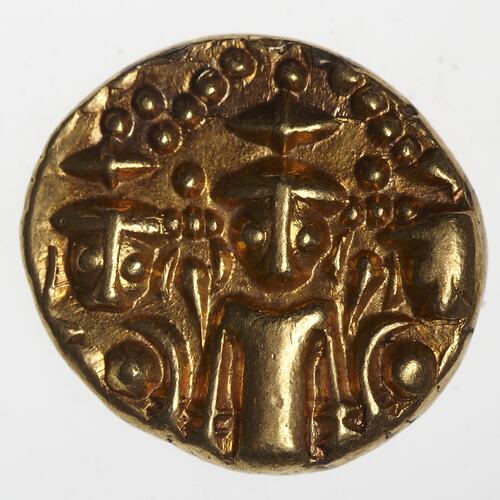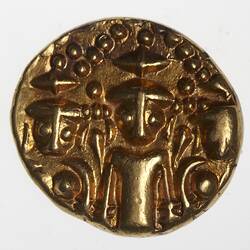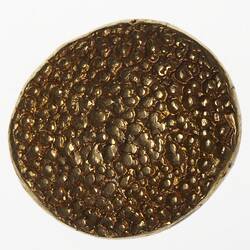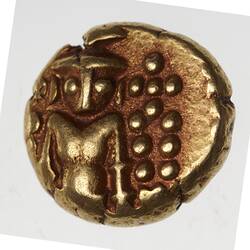Summary
1 Pagoda, Issued by, Madras Presidency, India, 1678 - 1740
Minted by Fort St. George (Madras)
Obverse Description
Three half figures, swami
Reverse Description
Granulated
Edge Description
Plain
Significance
The right to strike gold pagodas was granted in 1639. From about 1678 a granulated reverse, based on the Dutch pagoda of the same date, was employed. This type, with three figures on the obverse, was introduced in about 1691 and retained until replaced by the star pagoda in 1740. This type, with half length figures and no star on the reverse seems to have been strruck for the Northern Settlements where three figures on the obverse was the prefered form (see Pridmore p.25).
This type of coin should be included with the star reverse form as made legal tender in New South Wales in November 1800 after a Proclamation by Governor King. Its value in the Colony was set at eight shillings.
More Information
-
Collecting Areas
-
Acquisition Information
Transfer from National Gallery of Victoria (NGV), 15 Mar 1976
-
Date Issued
1678-1740 AD
-
Issued By
-
Mint
Fort St. George Mint (Madras), India, 1678-1740
Krause gives the dates 1740 - 1807 but quotes Pridmore 3B type -
Denomination
-
Series
-
Material
Gold
-
Classification
-
Category
-
Discipline
-
Type of item
-
Dimensions
12 mm (Outside Diameter), 3.389 g (Weight)
-
Shape
Round
-
References
Pridmore 3B KM#304
[Book] Pridmore, Fred. 1975. The Coins of the British Commonwealth of Nations, Part 4, India. 1., 22-23 & 57 Pages
[Book] Bruce, Colin R. 2007. Standard Catalogue of World Coins 1701 - 1800.
-
Keywords
British Empire Coins, Australian Proclamation, 1800, British Commonwealth and Empire Coins



